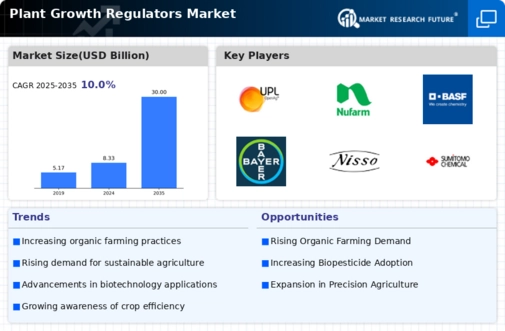Market Share
North America Plant Growth Regulators Market Share Analysis
The North American Plant Growth Regulators (PGR) market share positioning starts with a complete agricultural landscape study. Successful PGR suppliers study area agricultural trends, crop preferences, and regulations to meet North American farmers' requirements. Strategic market players specialize on North American crop sectors. This may include maize, soybeans, or specialized crops like fruits and vegetables. PGR solutions tailored to crop growth patterns and needs increase market relevance and farmer appeal. Given North America's different climates, PGR market leaders provide tailored formulas. Weather circumstances provide unique issues for farmers, thus these formulas provide PGR solutions tailored to their location and climate. Environmental compliance is key to market positioning. PGR suppliers emphasize sustainability and eco-friendly solutions in formulations that fulfill environmental requirements and laws to address the growing need for ecologically responsible agriculture. Research and development are essential for competitiveness. PGR providers engage in plant science, biotechnology, and agronomy innovations to improve product effectiveness and solve North American agricultural concerns. Market leaders promote farmer education and training. Providers of PGR application and dose advice improve product efficacy and identify themselves as informed and helpful partners in sustainable agriculture. Strategic cooperation with agricultural research universities boost market position. PGR suppliers collaborate with universities and research institutes to keep current on scientific advances, developing cutting-edge formulations and boosting their market reputation. To guarantee farmers get PGR goods quickly, providers stress effective distribution and supply chain management. During important growth seasons, a strong distribution network and supply chain boost consumer satisfaction. Market leaders must work with agricultural extension services. Working with these services helps PGR suppliers communicate information, perform field experiments, and understand North American farmers' requirements and concerns, enabling them to customize their solutions. Market competitiveness requires strong customer and technical support. PGR suppliers offer prompt customer service and technical assistance to help farmers choose products, apply them, and resolve issues throughout the growing season. Transparent pricing and cost-effective solutions boost market competitiveness. PGR vendors provide straightforward pricing, bundled services, and value-based models to convince farmers that PGRs are a worthwhile investment in crop output and quality. Market leaders prioritize monitoring and reporting. These devices monitor crop health, growth, and PGR efficacy in real-time. PGR suppliers may improve their value offerings by helping farmers make educated choices based on actionable information.












Leave a Comment